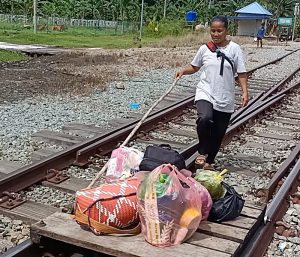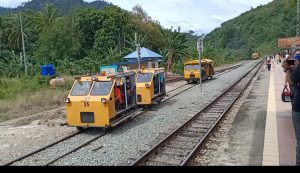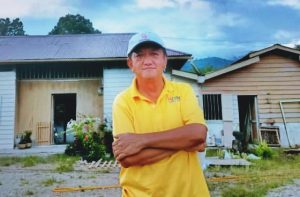KOTA KINABALU: Riding the Sabah State Railway (SSR) is an adventure worth taking due to the sights that can be seen through the window as this transport chugs along the tracks. This is the only rail transport operating on the island of Borneo ; a 134-kilometre track from Tanjung Aru to Tenom.

Formerly known as the North Borneo railway, it has a long history since its establishment in 1896 by engineer Arthur Joseph West with his assistant Gounon Lulus, a Murut from Keningau.
Through the years, this railway route has gone through various extensions, from a 32 kilometres track from Bukau River, north to Beaufort, and south to the port of Weston for the first line, which was then extended to 48 kilometres route to Tenom in 1903, thereby completing the distance available now, except for the one that went to Kota Kinabalu, which has been discontinued.

Fast forward in time, and times changed. Transportation for goods from the interior are readily available for everyone. The railway is not so well used as before although folks living in villages along the railway line still utilise it as their main mode of transportation. This is especially true for villagers from Pangi who travel to Tenom for various errands including economic reasons. The train from Tenom runs this route twice a day.
Lawrence Wong the spokesperson of the Malaysian Chinese Tourism Association (MCTA) Sabah Branch shares that there is ample time between the route run to utilise the gap for tourism promotion.

Coupled with the history, he believes that the scenic view during the 45 minutes route run will be of tremendous interest, as tourists will be able to view the mountains towering above them, the rushing water of Padas River and the greeneries of the forests around the track as well as the villages sited along the way.
“This enable tourists to enjoy nature while experiencing a unique train ride, which is slow enough to enable good views and interesting photographs,” he shares adding that the train-run should be optimised by allowing tourists to ride during its ‘official’ breaks.
“I believe this is a good tourism products where information on the inception of the train, how it serves the community in the past and the present as well as its impact on the people’s life can be shared with our tourists.”
“This can be a win-win situation, especially if the people in Pangi work together with tour operators. They can sell food and drinks in their stalls to cater to visitors. They can also sell handicrafts and promote a short village walk for tourists.”
There are some unique sights that could be of great interest to tourists; that of a wheeled board used on the railway track to transport goods. When the tracks are devoid of trains, the people put their wheeled boards on the track and push their heavy goods home.
Wong believes that there are more products that can be promoted to tourists in the village and along the route, as this train stops at small village stations to pick up passengers.
“We will communicate with the Railway Authorities about this matter as well as villagers who are interested to open up stalls or eateries to cater to tourists. We hope for positive outcomes,” he shares.
Wong was in Tenom recently with tour operators to visit tourism spots and potentials for promotion.-Anna Vivienne/BNN






